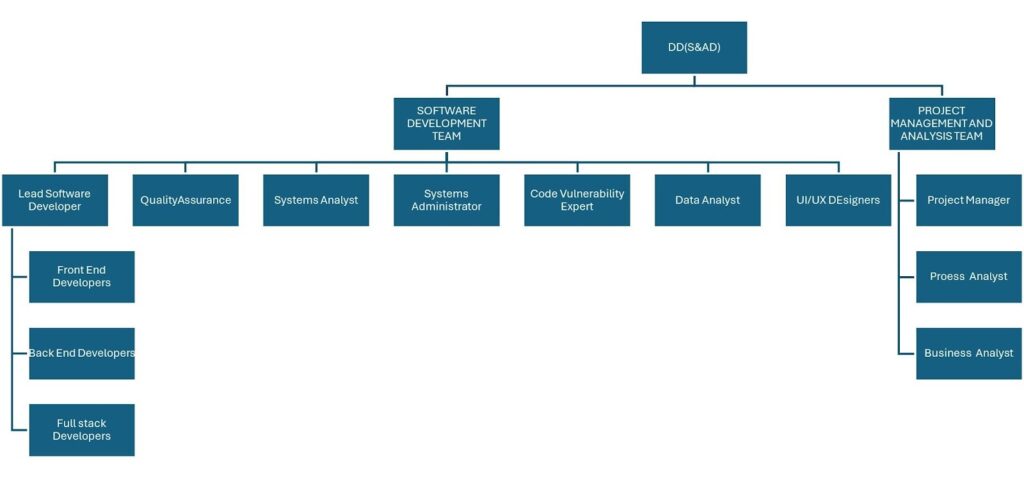07069793211 | comsit@unilorin.edu.ng
1. Portal Unit: This unit is responsible for the continuous improvement and maintenance of the university’s digital portal, ensuring that it serves as a comprehensive gateway for accessing academic resources, administrative services, and campus information. Key objectives include enhancing user experience through intuitive design, improving accessibility for all users, and integrating various university functions such as course registration, schedules, and announcements.
2. Software and Applications Development Unit : Focused on developing and managing bespoke software applications, this unit aims to address the unique needs of our university community. Objectives include streamlining administrative processes, enhancing academic management systems, and implementing user-friendly applications that facilitate communication and collaboration among students and faculty.
3. Electronic Learning and Assessment Unit: This unit is dedicated to advancing the university’s e-learning capabilities. Key objectives include developing robust online learning platforms, creating e ngaging digital content, and ensuring reliable assessment tools that support both formative and summative evaluations, ultimately enhancing the overall online learning experience.
4. Web Services Unit : Responsible for managing the university’s web presence, the Web Services unit aims to create a user-friendly, informative, and visually appealing website. Objectives include ensuring that all web content is current, optimizing site performance for speed and accessibility, and integrating interactive features that enhance user engagement.
5. Digital Innovation and ICT Ideation Unit : This unit drives innovation within the university by fostering a culture of creative problem-solving and digital experimentation. Key objectives include organizing hackathons and innovation challenges, collaborating with academic departments to integrate technology into curricula, and exploring emerging technologies that can enhance the educational experience.
6. IT Officers Coordinating Unit : This unit oversees the coordination of IT personnel across the university, ensuring effective collaboration and support for all technology-related initiatives. Objectives include standardizing IT practices, providing ongoing professional development for IT staff, and facilitating communication between units to address technological needs efficiently.
7. Training Unit : Focused on enhancing the digital skills of both staff and students, this unit provides comprehensive training programs on various technology platforms and tools. Key objectives include assessing training needs, developing tailored training modules, and ensuring that all users are equipped to utilize technology effectively to support their academic and administrative functions.
8. Cybersecurity and Multimedia Unit : This unit plays a crucial role in safeguarding the university’s digital assets against potential cyber threats. Objectives include implementing robust security protocols, conducting regular security audits, and providing training on safe online practices for all members of the university community.
9. Software and Hardware Installation, Repairs, and Maintenance Unit : Responsible for ensuring that all IT equipment and software are functioning optimally, this unit’s objectives include establishing a routine maintenance schedule, providing timely repairs, and ensuring that all hardware and software installations meet the university’s standards and requirements.
10. Mail Services and Help Desk Unit : This unit facilitates effective communication and provides technical support to the university community. Key objectives include streamlining mail services, establishing a responsive help desk system, and ensuring that all users receive prompt assistance for their technical inquiries.
11. Network Operations Unit : Tasked with managing and maintaining the university’s network infrastructure, this unit aims to ensure reliable connectivity for all users. Objectives include monitoring network performance, implementing necessary upgrades, and ensuring secure access to university resources across campus.
12. Administrations and Operations Unit : This unit supports the overall administration of the Directorate, focusing on operational efficiency and alignment with university goals. Key objectives include optimizing resource allocation, enhancing communication within the Directorate, and ensuring compliance with university policies and standards.
This operational blueprint represents a forward-thinking approach to technology management, providing a roadmap for the Directorate to evolve in response to emerging trends and the needs of our university community. By focusing on these key objectives, the Directorate of Computer Services and Technology aims to lead the digital transformation at the University of Ilorin, ultimately enriching the educational experience and fostering a culture of innovation and excellence.
Organogram of the Directorate
